**Just FYI, this post was previously live on my other site TheWingedFork.
My mother’s mother, mama was a Rebello from ‘that village’ who married papa who was a Fonseca from ‘this village’ and so Mom was a Fonseca from ‘this village’ who married Dad, a Rebello from ‘that village’. Where were these two East Indian villages? In Poisar or Poinsur, in Mumbai, India.
We didn’t grow up living in the village itself, but a few meters away from it. But we always visited ‘Papa’s House’ or ’99, Home Sweet Home, Poinsur’ until it made way for a building. It was fun visiting and staying there, playing games and treasure hunts all over and around the house, and also on top of it.

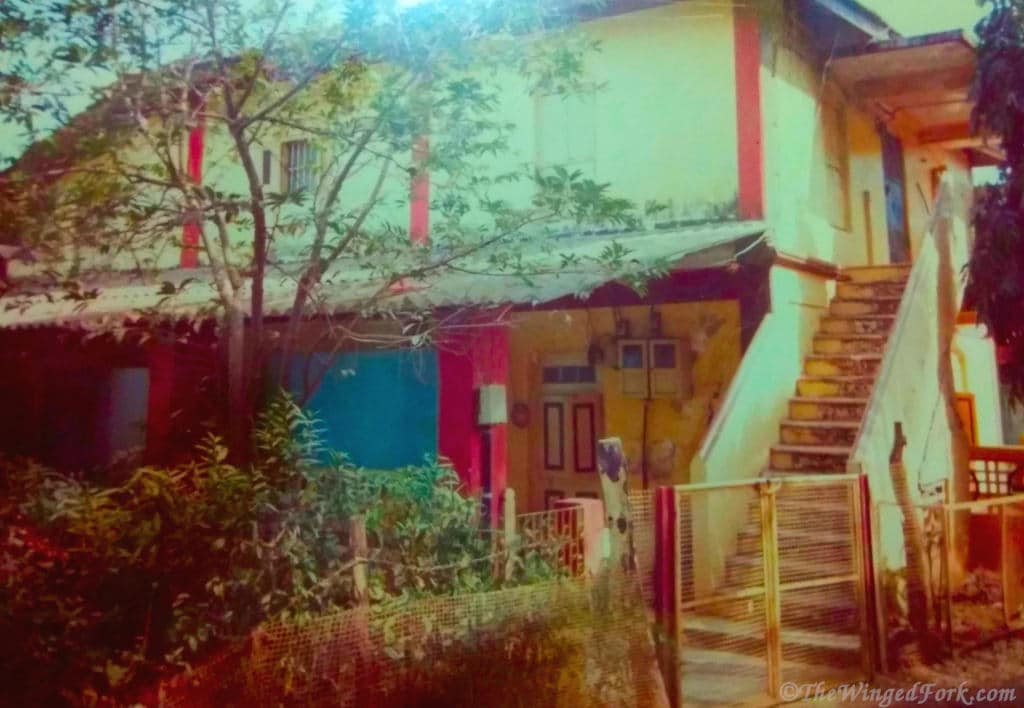
There were a lot of trees and plants in the compound on all sides. Moringa or Drumstick tree, Custard apple trees, Jambu tree (you know the ones we make love apple pickle with), Ashoka trees, Portia tree, Papaya and Banana trees, Lime trees, Curry leaf trees and so many more…
We used to also go next door to Uncle Hector’s house to see the chickens and ducks and love birds which were looked after by our cousin Babu. Abby remembers when she was 4 or 5 years old she used to play with our cousin Chotu making juice from the benduka (portia) tree buds and chapatis from the leaves.
By the way, if you want our traditional East Indian recipes on hand, pick from any of the scrummy books in the Abby’s Plate Cookbook Series.

Opposite papa’s house in the bazaar is a cross that stands dedicated to the memory of our great grandfather Joseph Braz Fonseca, his wife Louisa Catherine Fonseca, and daughter Jessie Joanna Fonseca. This cross was re-built in 1975 by my grandfather Leslie Fonseca on the occasion of its silver jubilee. It’s currently not a good condition due to the years that have gone by, candle wax, and also the salt that people leave on it.

We used to climb the Drumstick tree and Custard apple tree to get onto the roof and collect the Portia flowers and buds. Sometimes we even used the staircase and cling to the wall near the ledge to get there. The buds were then used to make ‘rasna’ and offer our guests along with the chapatis made of leaves. Fun times!

Our parents and grandparents grew up in Poinsur village. This is where we belong. In school, I remember being asked where’s your native place and I would say here or Bombay. And would get a strange look from the other kids, because they were all from other areas of the state or other states. And their reply usually was – you don’t have a native place?
If you’d like to leave Sarah a tip or buy her a coffee, do it here!
This village and that village is how we address it in conversations about people or houses from either side of the river. It’s basically the same village with the ‘Poinsur river’ flowing through it and has East Indian bungalows and houses on both banks. The village is not the same as it used to be as most of the old bungalows have been re-developed into buildings, but parts of the village still remain.
This is a pic of our grandfather Leslie Fonseca or ‘Papa’ as we called him standing under the Poinsur bridge way back then.
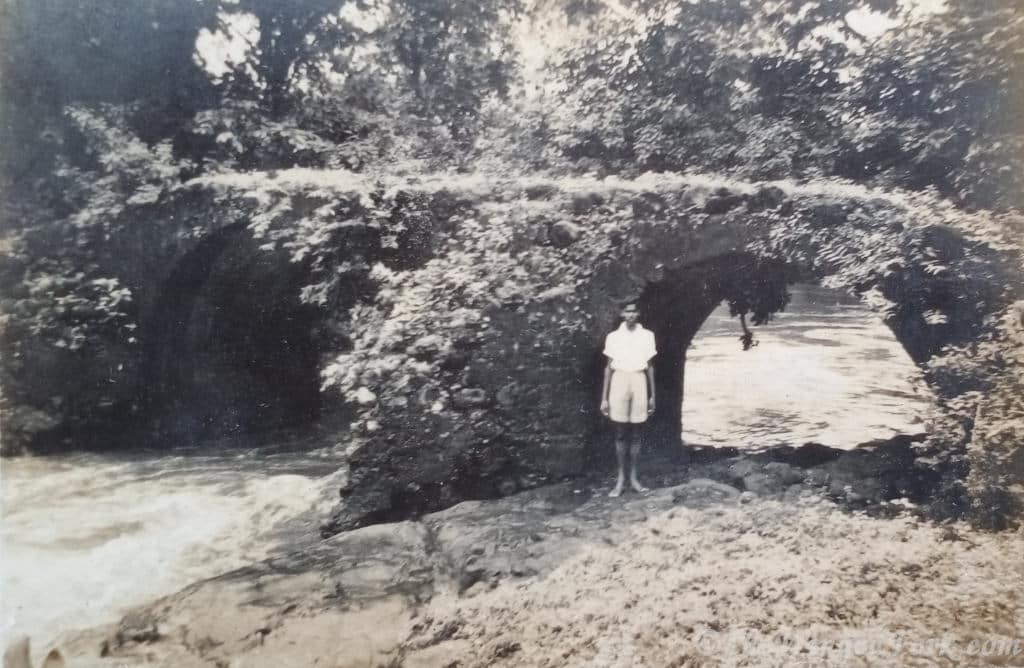
And here he is swimming in the Poinsur river. See how clean it was!
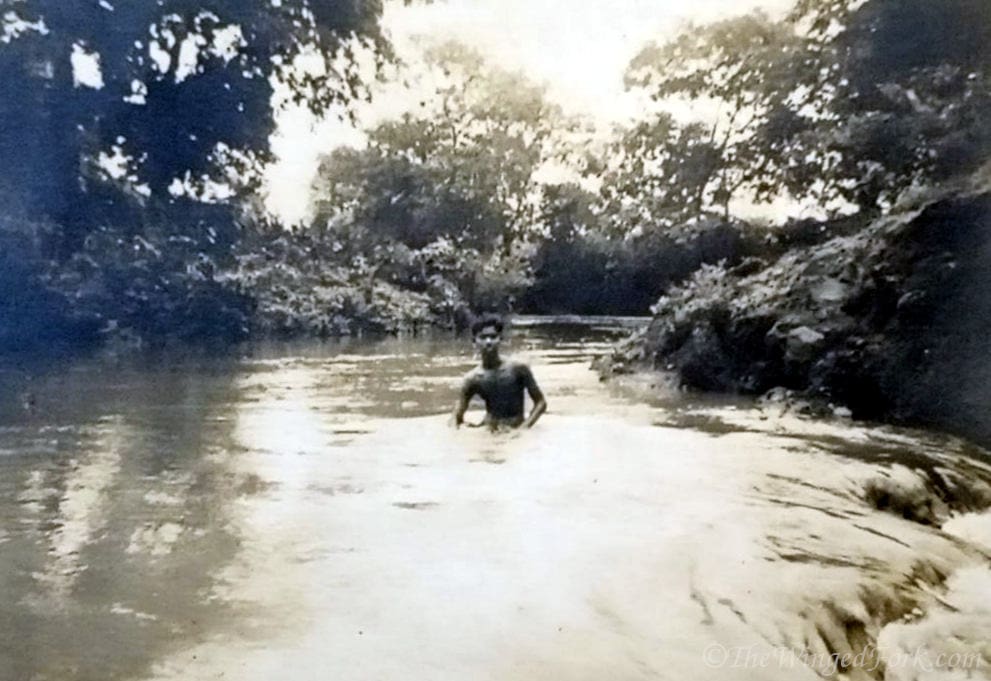
Even dad says that when he was young they would go fishing and swim in the river too. Dad, his brothers’ uncles Rolly and Romeo, and grandad Felix would fish in Poinsur river with circular nets. After the monsoons, the first fish you would get is mori (shark), then mashias (mudskippers), then chunas, shingala (catfish), also varas and carcutlas.
And my Aunt Mary says she and her cousin (Auntie Muffy) would go to the river to play and collect tiny fish with handkerchiefs in glass jam jars and aunties from the village would also come to wash clothes. That sounds so different from the way things are now. I guess the river was pretty clean until the late 60’s or early 70’s. Nowadays, it’s more like a large gutter because of all the filth that’s in it. Look at the river now and you wouldn’t dare enter it.
A lot of the Poinsur East Indians had land around Kandivli. My grandfather was an agriculturist or farmer or ‘Kunbi’ or ‘Kulbis’ as they were known. He owned land and had huge fields and would grow paddy or rice crops and also vegetables like onions and so on. His fields also had a lot of Mango and Targola trees and had bullocks to sow the fields.
Mom remembers they used to play around the hay bales when they were young. I remember going to the farm for picnics and drinking toddy, or seeing my brother and dad swim with the frogs in the well. Those were fun times!
Below is a pic of my uncle Alroy at the erstwhile farm in Kandivali East with bullocks. This was back in the 80s. This area is now the famous Thakur village and Thakur Complex. And nope, one would think they got rich by selling all the land, but they didn’t.
My grandparents and many other Kulbis had to sell their land because of our government’s Land Ceiling Act in the 1960’s and they got a pittance out of it. Lives were lived taking loans and working to pay them off. If only they had managed to hold on to the land a little longer, our lives would have been quite different.
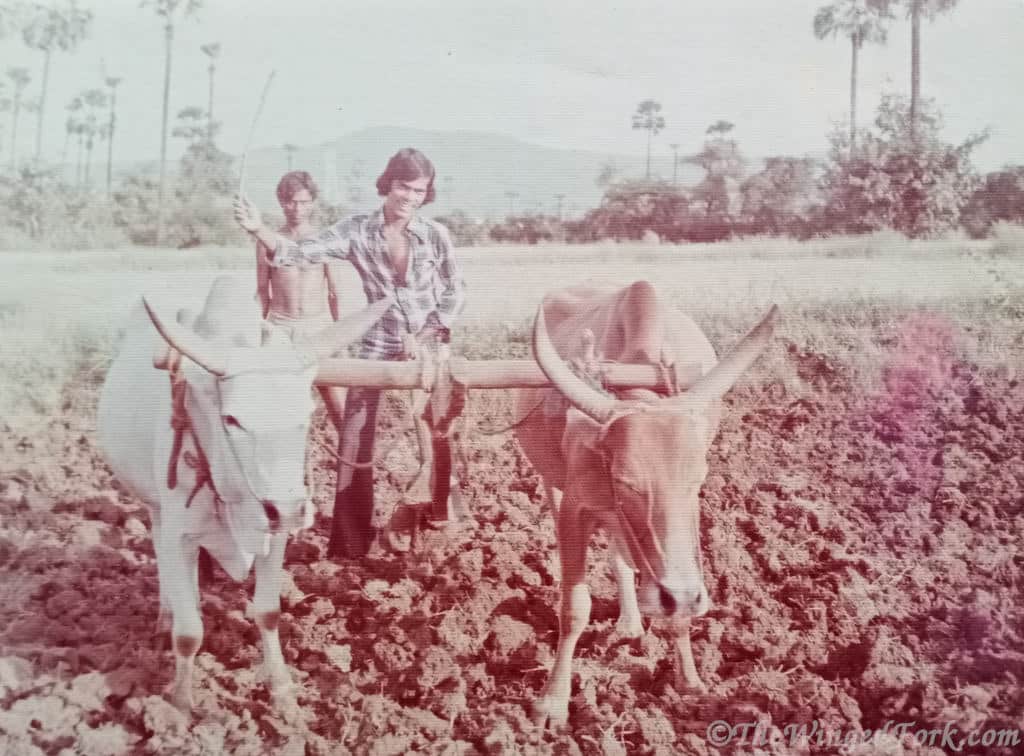
Ariel from the Poinsur village also tells of how he remembers the Poinsur home the veranda, the swim in the River, Palm wine at the fields with Ally. He says our Papa and his Dad would share the bullocks to plow the fields. His dad would also work part-time for our Papa sometimes. A lot of wonderful memories.
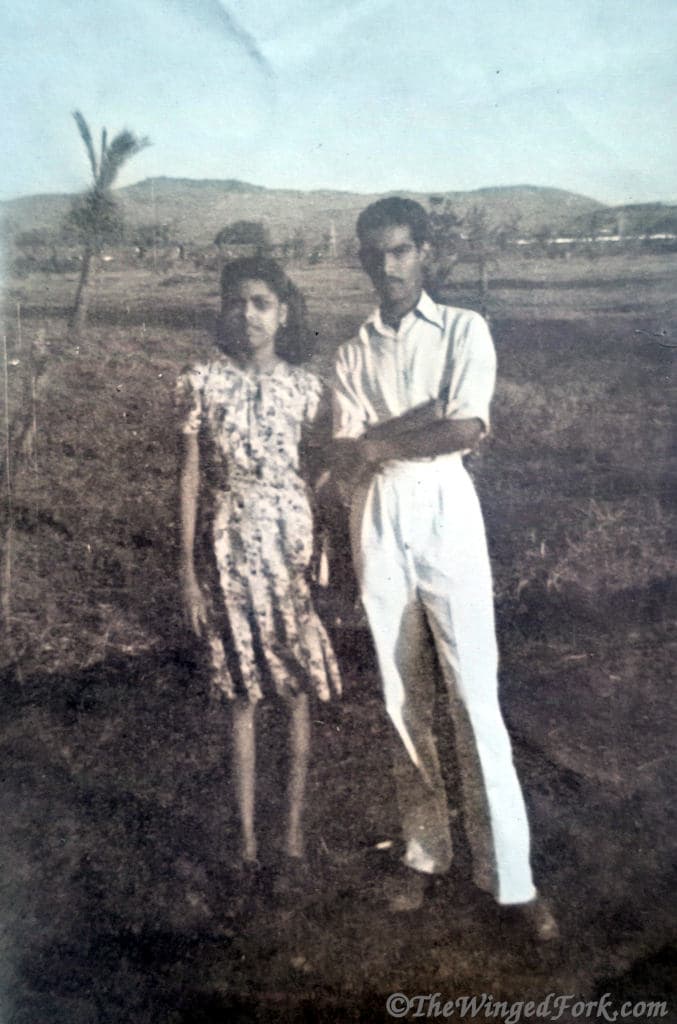
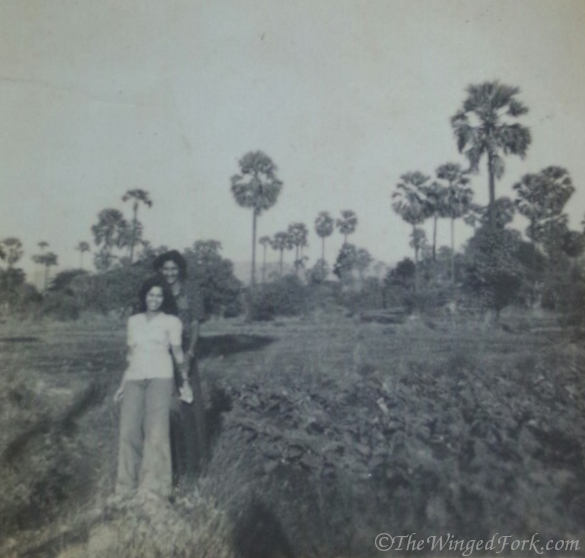
A lot of family picnics were had there, those were the good old days. Below is a pic of both sides of mom’s and dad’s family at Papa’s fields after they were married.

The church feast was a really big event back in the day. Our church is Our Lady of Remedy in Poinsur. My great grandfather Joseph Braz Fonseca or ‘Braz Patil’ as he was called, who was the Patil of the village would have a grand feast. People from Bandra and surrounds would come by Bullock carts or Horse carriages to celebrate our church feast held on the 1st Sunday of May every year.
Mom and her cousins would all gather at Papa’s house to help with the food preparation. All yummy East Indian dishes. Mom tells of how they – her, Auntie Chrissy, and other cousins used to help by cutting the stir-fried pork into cubes for sarpatel, while also munching on some.
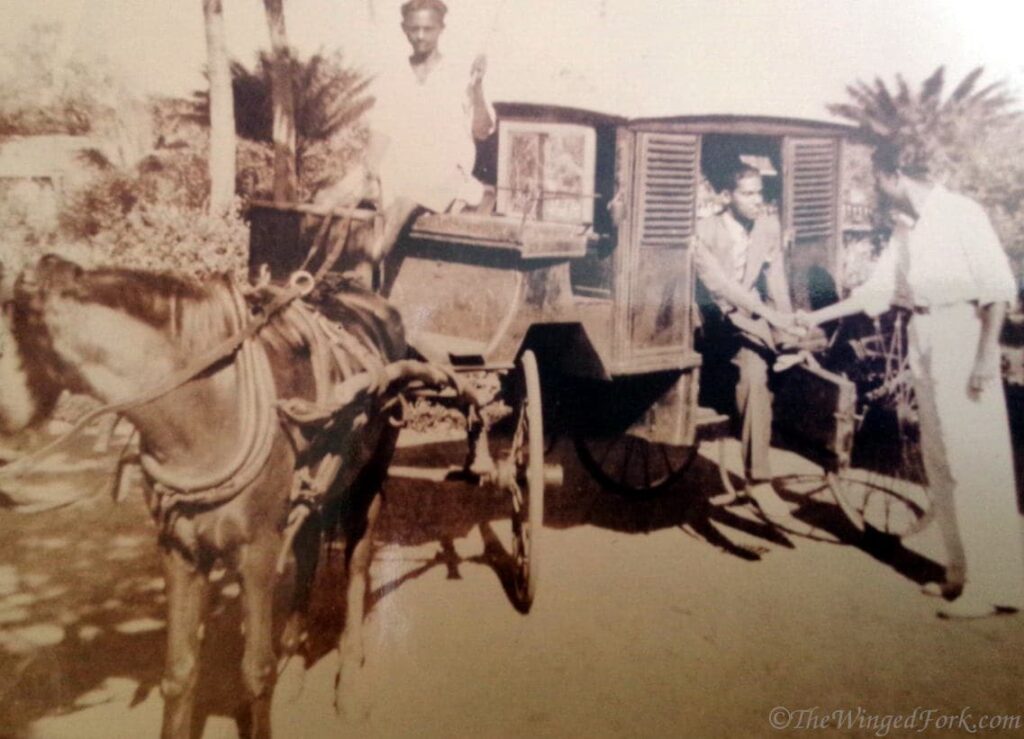
Did you know it is a Padroado church built by the Portuguese in 1555 and it is now 466 years old. It should technically have a heritage status as one of the oldest churches of Bombay. Apparently, this is a newer structure, and there was an even older church in the 15th century which was located where Punit Nagar now is.

Mama (mom’s mom) used to tell us that as an infant she was very sickly and they didn’t know if she would live or not. So when she turned 1 year old, her Grandfather, John Anthony Rebello donated some land to the church, and that is when the Our Lady of Remedy School began in 1926. Here’s her in the 1950s in front of the Remedy church, Poinsur with my Uncle Denzil circa 1952.
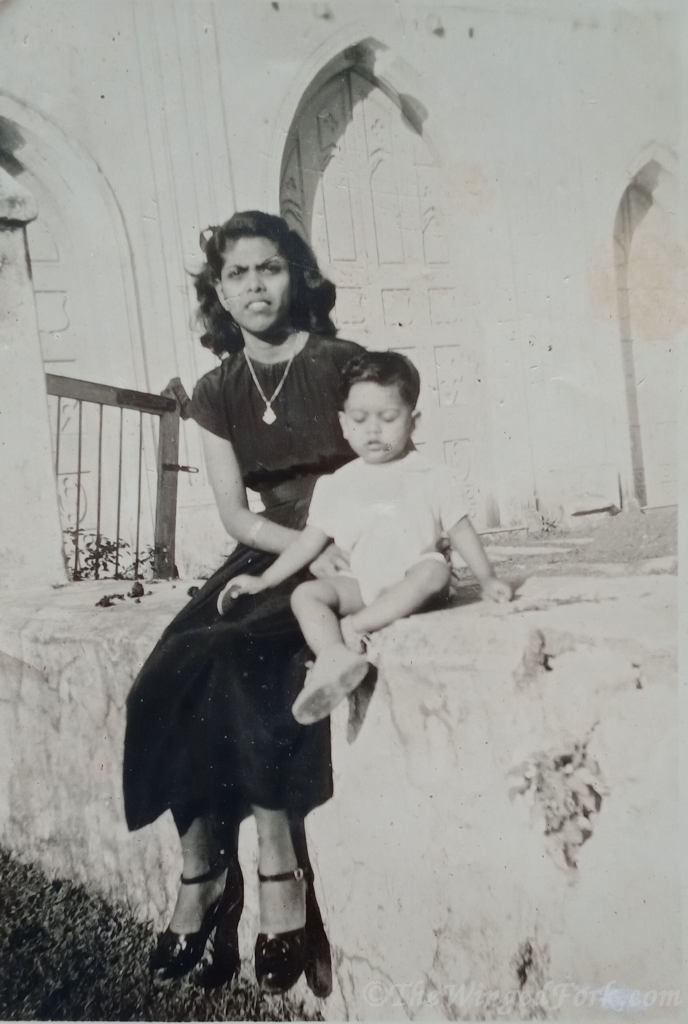
Mom, Dad, aunts, uncles, and a lot of the villagers too have since then attended school here, including us.
My other Great grandfather Joseph Frank Rebello was secretary to Kaka Baptista and he also did his part in helping India’s Freedom struggle against the British. Since he was well-versed in English, he used to draft and write the letters for Kaka Baptista that were sent to the British.
He had built a big grotto opposite the parochial house in 1933. It was huge and made of boulders that the kids of that generation used to play and sit on and around.
Below is a pic of uncle Trevor in front of the old grotto in February 1958 at 6 yrs old during the Lourdes Centenary celebrations; you can see the celebratory banner above and a recent pic in front of the re-built grotto.


Below is a pic of Hilda Josephine Rebello, Joseph Frank Rebello’s wife and my great grandmother in a traditional East Indian Saree. She was born in Persia (now Iran) as her father Dr. Sebastian Rebello was a doctor working there for many years. They moved back to India when she was around 7 or 8 yrs old.

This post is still a work in progress. I’m going to write more about great-grandmom Hilda, and about the grandparents on dad’s side of my family, and about life in Poinsur as and when I can. But if you want to share any stories about your life in Mumbai of Old, just email me at sarah@abbyshearth.com
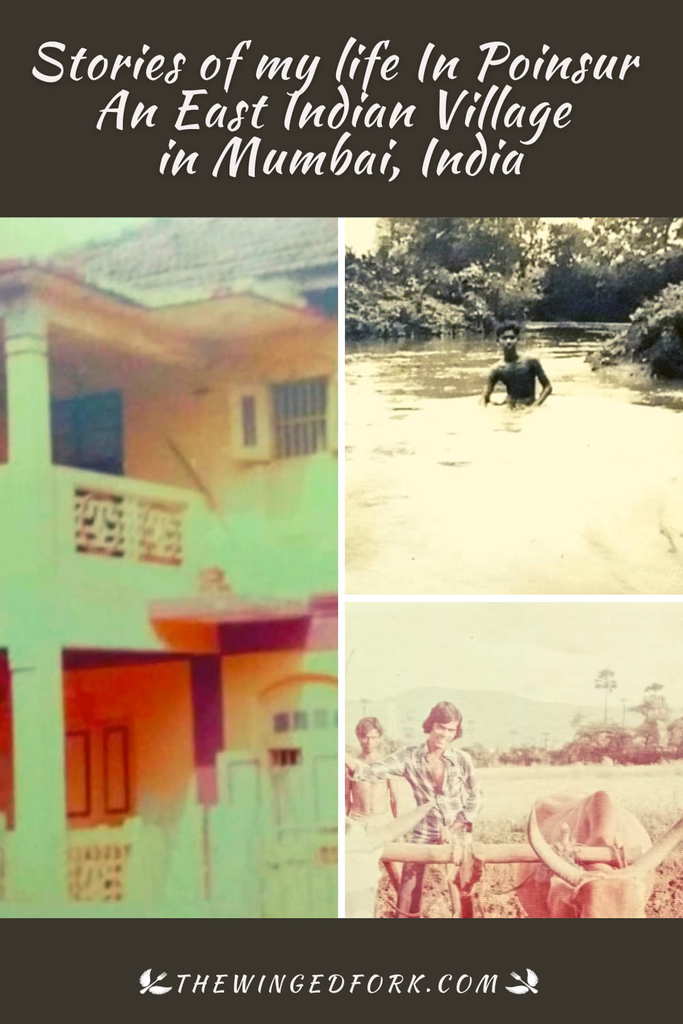
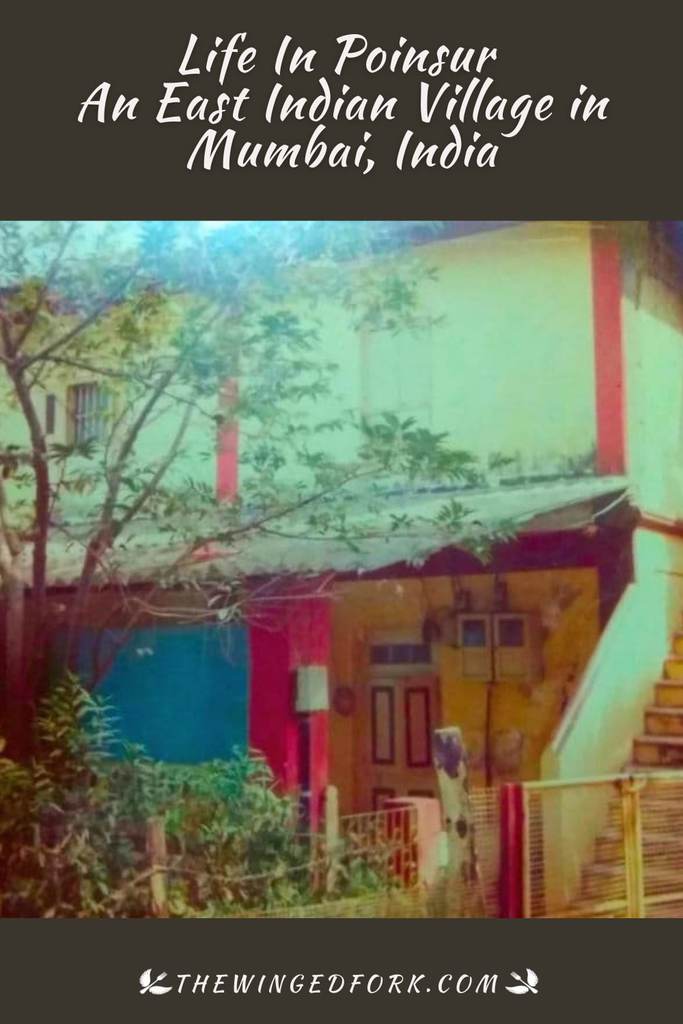




Beautiful and Nostalgic memories of Poinsur. Wish we could turn back time!!
So true!
Nostalgic and I never forget jim reeves being piped from home sweet home.
.
nd uncle Maxie and his barking dogs when I walked home from school
Those dogs were beauties.
Mama still sang Jim Reeves to us till the end. She loved listening to him. Mom and her siblings still listen to him continuously
Good old memories
I too remember some of it
Very well put down
Thank you Uncle Spencer! 🙂
Don’t forget to join our group on Facebook. Abby and I share a lot of East Indian stuff there, mostly about food though. https://www.facebook.com/groups/abbysplate
Such a beautiful article, brings back memories of a wonderful yesterday filled with love and laughter.